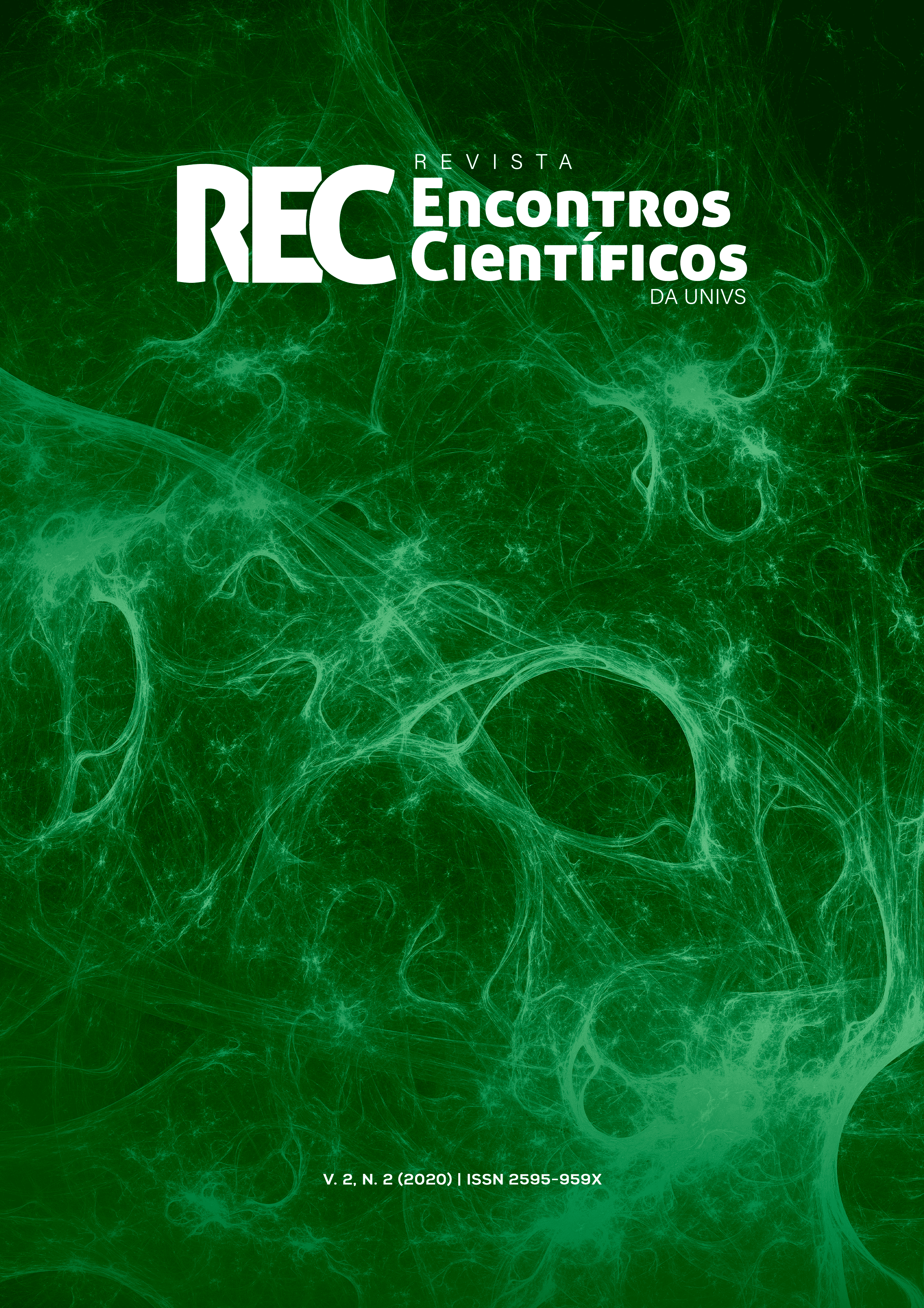A INFLUÊNCIA DA RADIOTERAPIA E DA QUIMIOTERAPIA NA INTERAÇÃO ENTRE O SISTEMA IMUNE E OS CÂNCERES
Keywords:
Imunovigilância. Quimioterapia. Radioterapia.Abstract
Os cânceres são um grupo de doenças caracterizadas pela proliferação celular desordenada. Os
tratamentos indicados variam de acordo com a classificação das neoplasias e incluem a quimioterapia e a
radioterapia. A morte celular decorrente dessas terapias resulta em inflamação que pode colaborar ou se opor ao
desenvolvimento tumoral. Neste artigo expomos essas interações e de quais fatores depende cada um desses dois
desfechos.
References
AGGARWAL, B. B.; VIJAYALEKSHMI, R. V.; SUNG, B. Targeting Inflammatory
Pathways for Prevention and Therapy of Cancer: Short-Term Friend, Long-Term Foe.
Clinical Cancer Research, v. 15, n. 2, p. 425–430, 15 jan. 2009.
HANAHAN, D.; WEINBERG, R. A. Hallmarks of Cancer: The Next Generation.
Cell, v. 144, n. 5, p. 646–674, 4 mar. 2011.
JAROSZ-BIEJ, M. et al. Tumor Microenvironment as A “Game Changer†in Cancer
Radiotherapy. International Journal of Molecular Sciences, v. 20, n. 13, 29 jun. 2019.
FORMENTI, S. C.; DEMARIA, S. Systemic effects of local radiotherapy. The
Lancet. Oncology, v. 10, n. 7, p. 718–726, jul. 2009.
JEREMIC, B. (ED.). Advances in Radiation Oncology in Lung Cancer. Berlin
Heidelberg: Springer-Verlag, 2005.
GRIVENNIKOV, S. I.; GRETEN, F. R.; KARIN, M. Immunity, inflammation, and
cancer. Cell, v. 140, n. 6, p. 883–899, 19 mar. 2010.
GRIVENNIKOV, S. I.; KARIN, M. Inflammatory cytokines in cancer: tumour
necrosis factor and interleukin 6 take the stage. Annals of the Rheumatic Diseases, v. 70
Suppl 1, p. i104-108, mar. 2011.
DENKERT, C. et al. Tumor-Associated Lymphocytes As an Independent Predictor of
Response to Neoadjuvant Chemotherapy in Breast Cancer. Journal of Clinical Oncology, v.
, n. 1, p. 105–113, 16 nov. 2009.
SIEGEL, R. L.; MILLER, K. D.; JEMAL, A. Cancer statistics, 2015. CA: a cancer
journal for clinicians, v. 65, n. 1, p. 5–29, fev. 2015.
BAXEVANIS, C. N.; PEREZ, S. A. Cancer Dormancy: A Regulatory Role for
Endogenous Immunity in Establishing and Maintaining the Tumor Dormant State. Vaccines,
v. 3, n. 3, p. 597–619, 30 jul. 2015.
PAUKEN, K. E.; WHERRY, E. J. Overcoming T cell exhaustion in infection and
cancer. Trends in Immunology, v. 36, n. 4, p. 265–276, abr. 2015.
BRENNECKE, P. et al. Inflammatory and Innate Immune Cells in Cancer
Microenvironment and Progression. In: REZAEI, N. (Ed.). . Cancer Immunology: A
Translational Medicine Context. Berlin, Heidelberg: Springer, 2015. p. 9–28.
SCHREIBER, R. D.; OLD, L. J.; SMYTH, M. J. Cancer Immunoediting: Integrating
Immunity’s Roles in Cancer Suppression and Promotion. Science, v. 331, n. 6024, p.
–1570, 25 mar. 2011.
SHANKARAN, V. et al. IFNgamma and lymphocytes prevent primary tumour
development and shape tumour immunogenicity. Nature, v. 410, n. 6832, p. 1107–1111, 26
abr. 2001.
HIRAOKA, K. et al. Concurrent infiltration by CD8+ T cells and CD4+ T cells is a
favourable prognostic factor in non-small-cell lung carcinoma. British Journal of Cancer, v.
, n. 2, p. 275–280, 30 jan. 2006.
HALD, S. M. et al. CD4/CD8 co-expression shows independent prognostic impact in
resected non-small cell lung cancer patients treated with adjuvant radiotherapy. Lung Cancer
(Amsterdam, Netherlands), v. 80, n. 2, p. 209–215, maio 2013.
SOUKUP, K.; WANG, X. Radiation meets immunotherapy – a perfect match in the
era of combination therapy? International Journal of Radiation Biology, 2015.
CAO, X. Regulatory T cells and immune tolerance to tumors. Immunologic
Research, v. 46, n. 1–3, p. 79–93, mar. 2010.
DERER, A. et al. Radio-Immunotherapy-Induced Immunogenic Cancer Cells as Basis
for Induction of Systemic Anti-Tumor Immune Responses - Pre-Clinical Evidence and
Ongoing Clinical Applications. Frontiers in Immunology, v. 6, p. 505, 2015.


